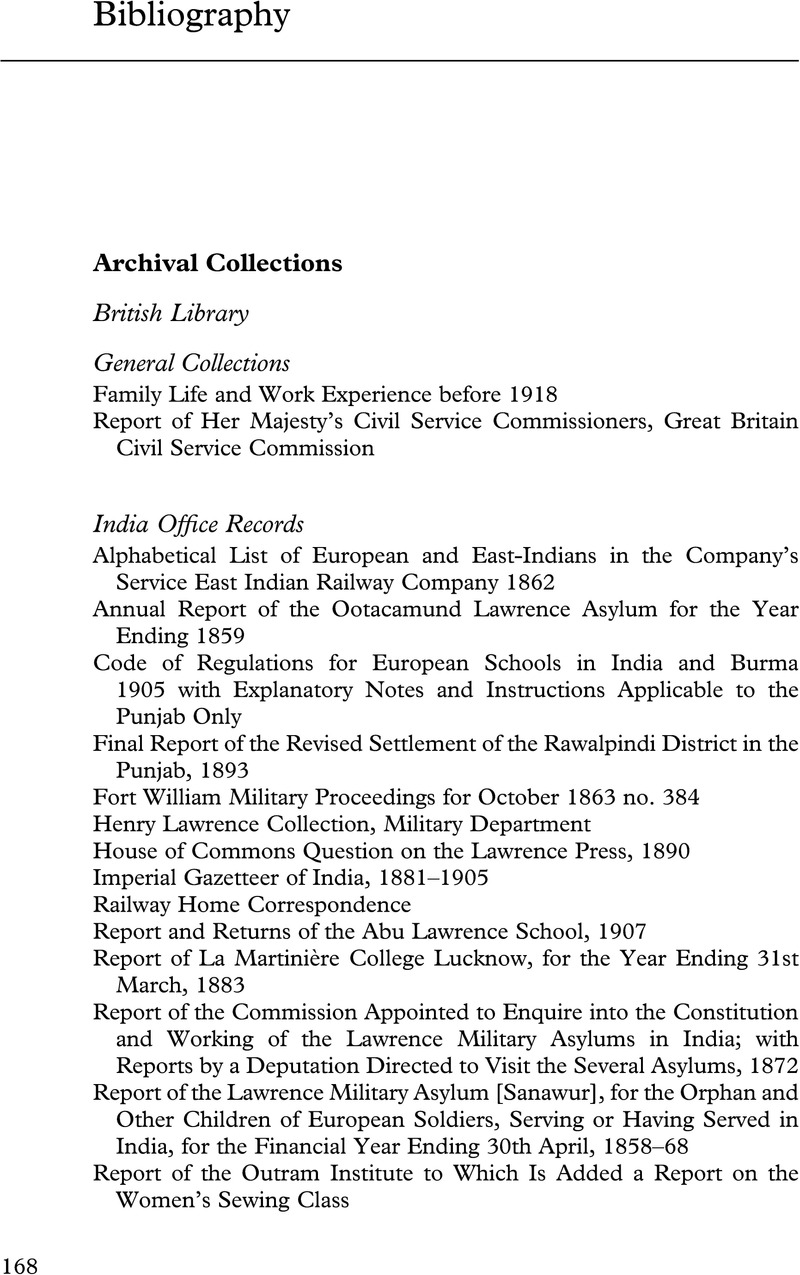Book contents
- Working-Class Raj
- Modern British Histories
- Working-Class Raj
- Copyright page
- Contents
- Acknowledgments
- Introduction
- 1 Family Histories and Remaking Class in British India
- 2 Writing Family Together across Imperial Distances
- 3 Military Domesticity
- 4 Servants in Empire
- 5 Class and Colonial Knowledge
- 6 Fragmented Families
- Bibliography
- Index
- References
Bibliography
Published online by Cambridge University Press: 20 October 2023
- Working-Class Raj
- Modern British Histories
- Working-Class Raj
- Copyright page
- Contents
- Acknowledgments
- Introduction
- 1 Family Histories and Remaking Class in British India
- 2 Writing Family Together across Imperial Distances
- 3 Military Domesticity
- 4 Servants in Empire
- 5 Class and Colonial Knowledge
- 6 Fragmented Families
- Bibliography
- Index
- References
Summary

Information
- Type
- Chapter
- Information
- Working-Class RajColonialism and the Making of Class in British India, pp. 168 - 184Publisher: Cambridge University PressPrint publication year: 2023
